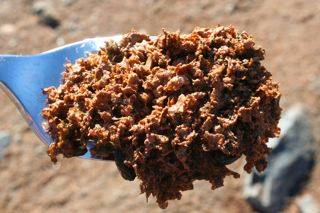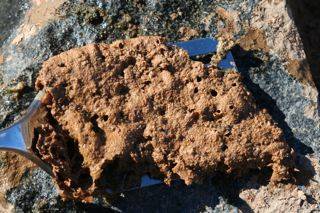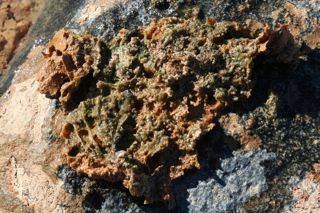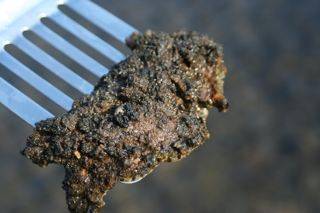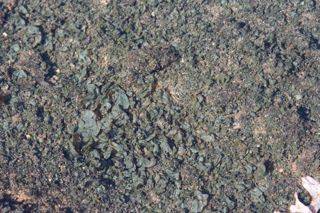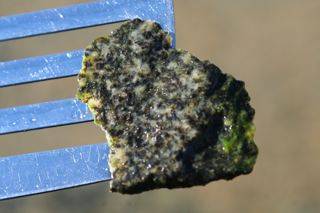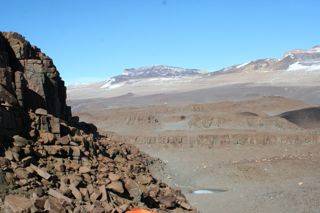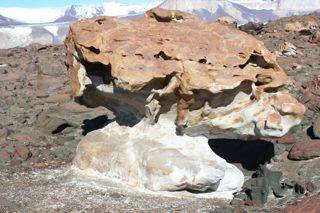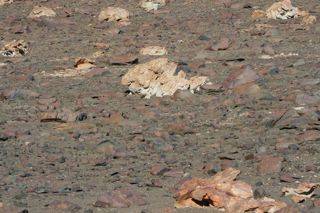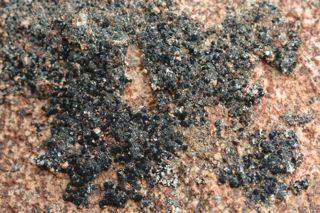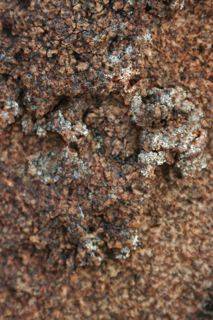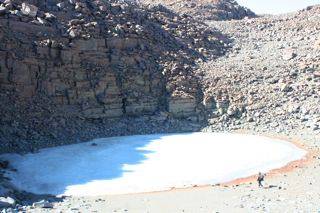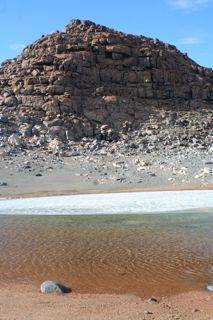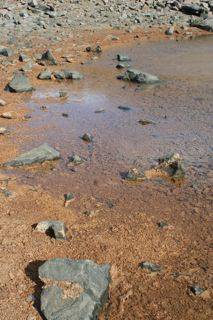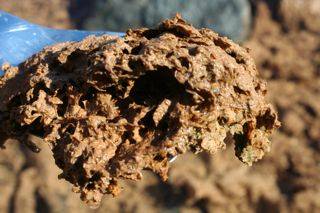Most of the cyanobacterial mats that we have found were orange pigmented and the macroscopic structure was flaky to cohesive. The orange colour is due to carotenoids which are an protection against UV and oxidative stress.
I had a small light micrscope with me in the field and the genus Leptolyngbya dominated the orange mats. Leptolyngbya are filamentous non-branching cyanobacteria belonging to the order Oscillatoriales. They are mostly between 0.5-3 micrometre thick. However, the lower side of the orange layers sometimes had green pigmentation, which besides the Leptolyngbya also had some Phormidium. The genus Phormidium also belong to the order Oscillatoriales, but they are thicker with a width of around 5 micrometres.
Flaky orange-pigmented cyanobacterial mats dominated by Leptolyngbya
Cohesive orange-pigmented cyanobacterial mats
green lower side of cyanobacterial mat with Phormidium
Interestingly, we also found some cyanobacterial mats which were dark purple to black. This colour is due to the UV-screening Scytonemin. We found the genus Schizothrix sp. (Oscillatoriales) in the mats which is known to produce Scytonemin. We also found several ponds with large accumulations of the genus Nostoc, which belongs to the order Nostocales and has specialist cells called heterocysts for nitrogen-fixation.
Cyanobacterial mats with the Scytonemin-producing genus Schizothrix
Nostoc accumulations in a meltwater pond
We also found a few ponds with green algae. Green algae biofilms are easy to distinguish from cyanobacteria as green algae are very bright green.
Green algae



